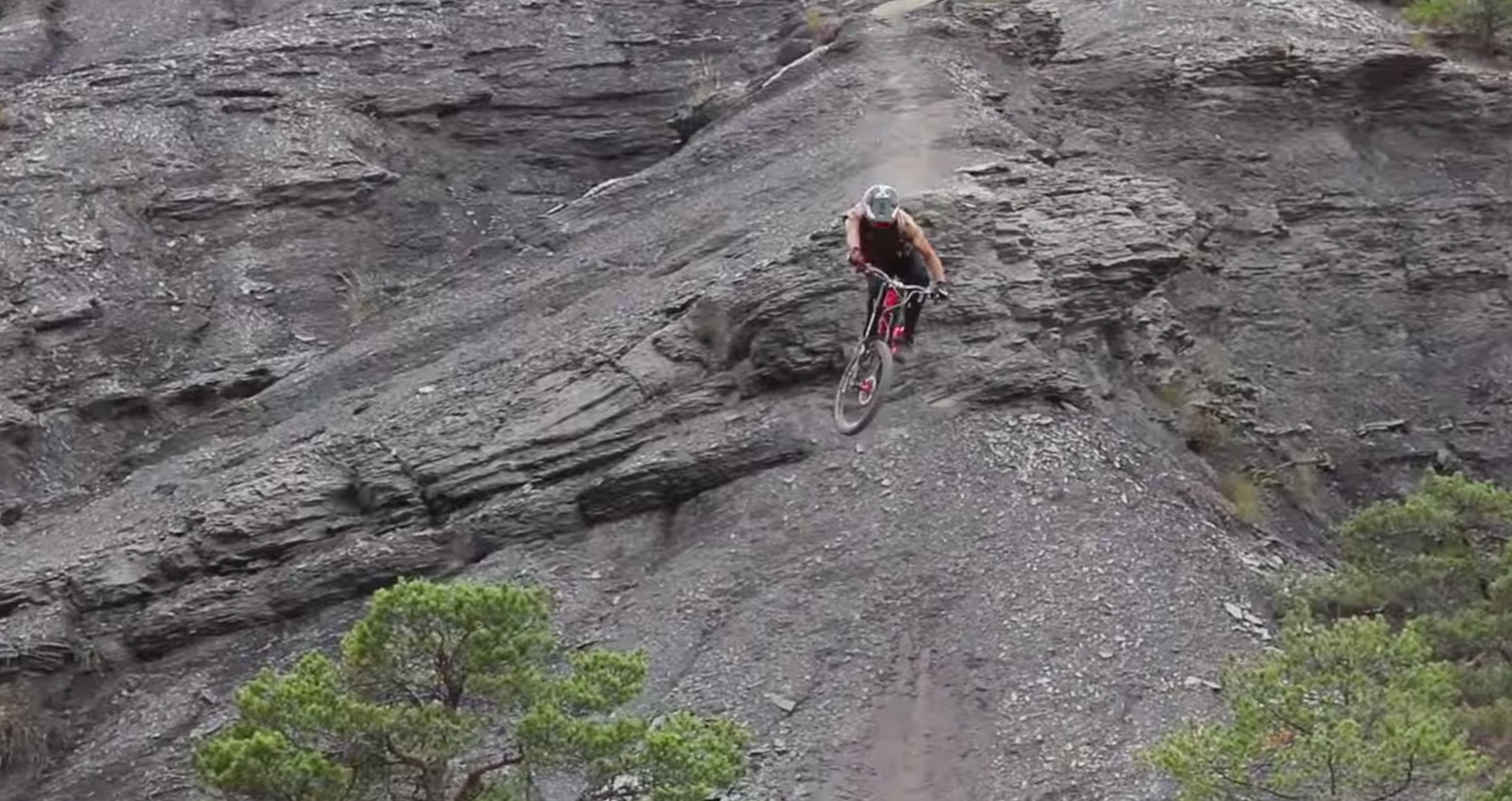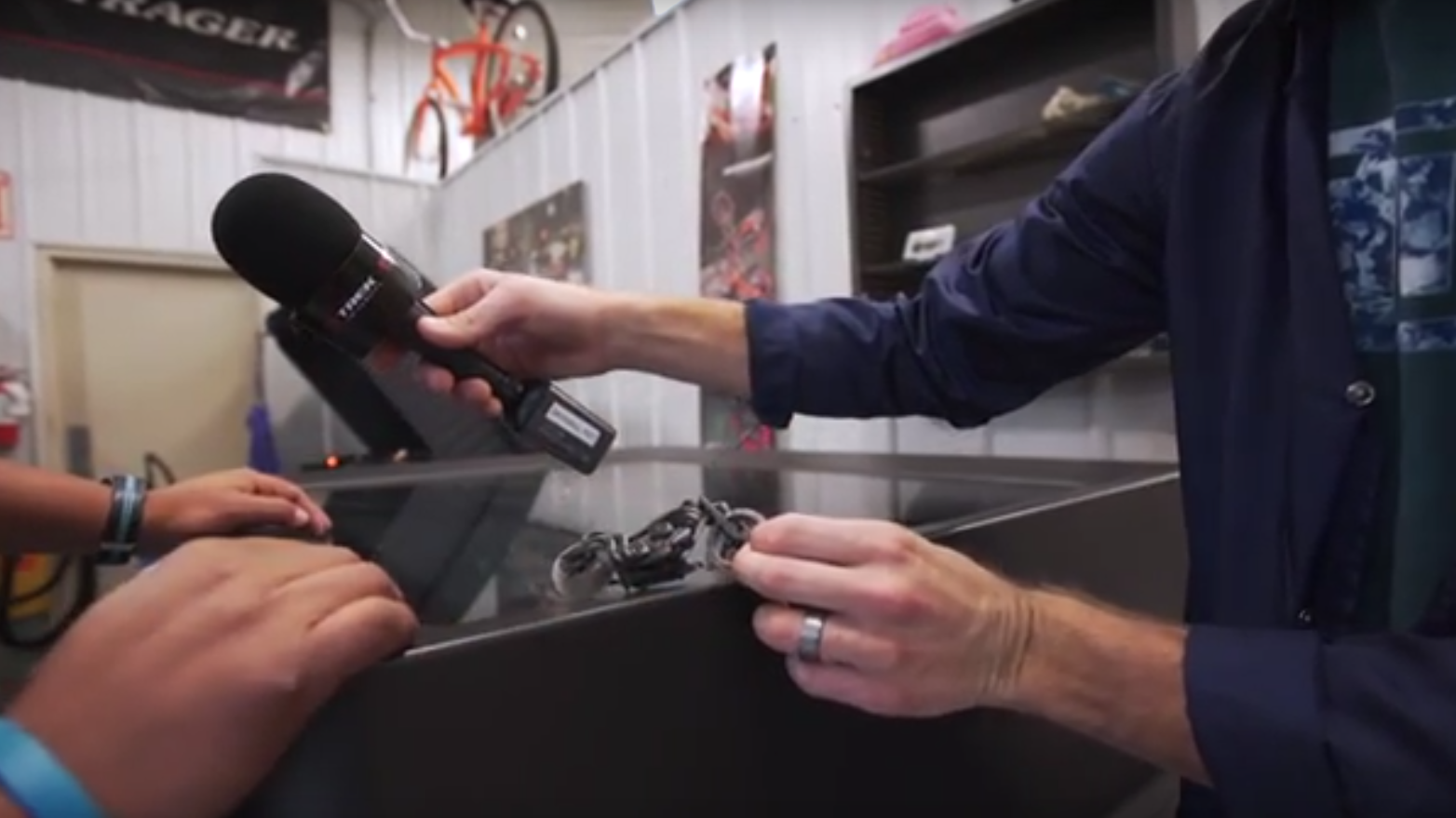[ad3]
Late last year we made a trip to Taiwan to visit FSA’s production facilities for their various bike components. One of these visits included their wheel production facility. This gave us the impetus to test a few of their new wheel sets that have been released in 2015 after we saw them being produced. A while back, FSA sent us a pair of their after market Afterburner 27.5″ Trail/All Mountain wheel sets to test.
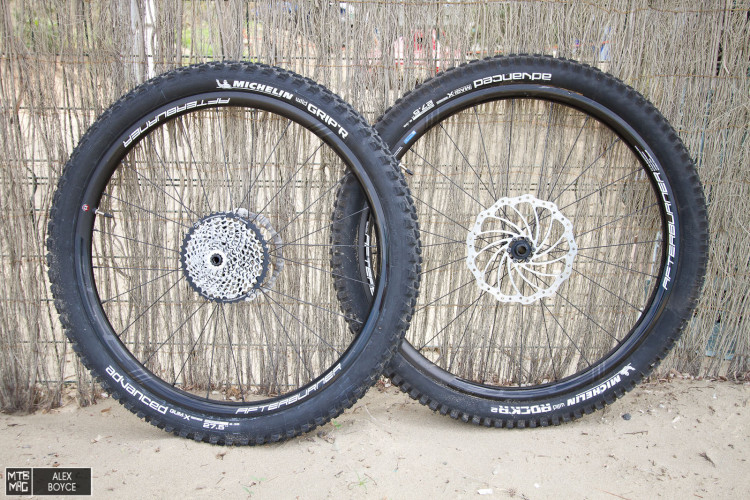
The Afterburner wheels are pretty stealthy aesthetically speaking.
Specifications
Weight : 1590g
Price : €560
• 6-bolt disc mounts
• 21.5mm inner diameter rims
• 6-pawl aluminum freehub
• 9mm QR and 15mm/142 thru-axle compatible
• Hand built
• Tubeless-compatible alloy rims
• Stainless steel bearings
• 24 straight-pull, double-butted spokes per wheel
• Compatible with cyclocross and gravel bikes
• Shimano or SRAM XD freehub
• Also included are alloy QR axles, sealant tape and tubeless valves.
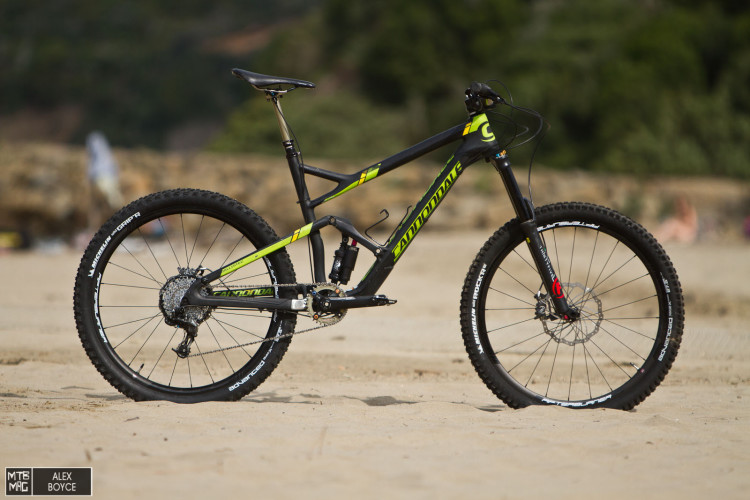
The Afterburner wheels assimilated nicely onto our test rig and were ideal for the All Mountain trails of Punta Ala where we tested them.
With FSA being new to the MTB wheel market this year, knowing that competition is stiff they have tried to set themselves apart from the competition by having a few unique features.
The rims are 26.1mm wide and have a profile depth of 25mm. Their internal width is 21 mm and they have an asymmetric aluminum profile. Each wheel is completely hand-built – lacing and truing is carried out by hand with each spoke checked precisely with a tensiometer. They are laced with 24 straight pull double butted spokes and black brass nipples. This adds up to 1590g a pair. This weight is right in the sweet spot for an aluminum trail wheel.
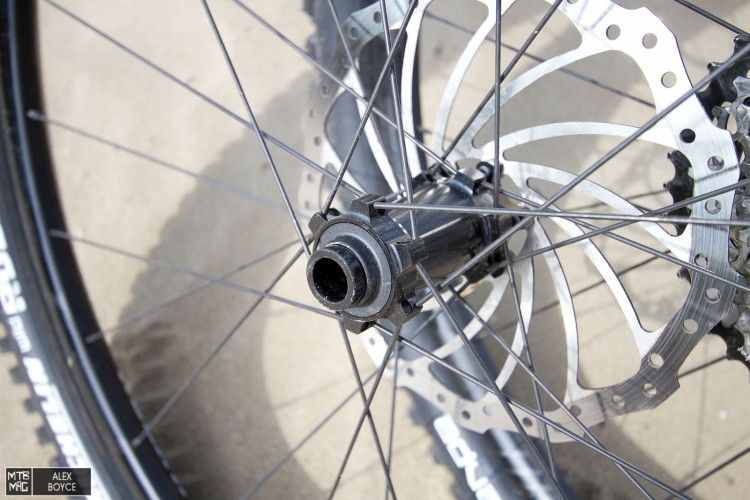
The front wheel is laced 2-cross on drive and non-drive side.
One key feature in the hand is the feeling of how tight the wheel build feels. FSA has said they’re able to better balance spoke tension up to 30% compared to normal symmetrical rim designs. With this there is an increase in spoke tension overall of 20%, giving more lateral stiffness, rigidity, and durability. The double butted spoke lacing is interesting to note, as there is a cross 2 lacing pattern using the 24 spokes. No spoke touches any other spoke, so no creaking noises if spokes loosen against each other. In theory a lower crossing pattern has less torque stiffness. But FSA have chosen to balance weight with strength and by using the 2 cross pattern have gone for more lateral stiffness due to the spokes being shorter, hence why the wheels are directed more at the Trail/All Mountain type of riding. All in all they have a well thought out construction.
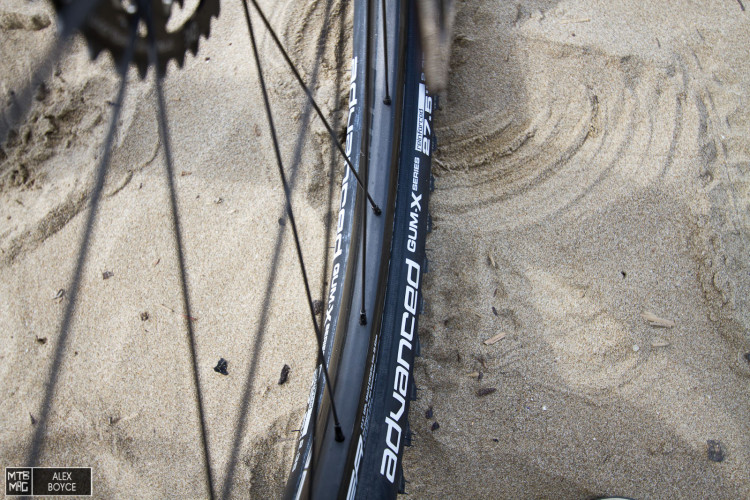
The rims are asymmetrical, thus reducing dish and creating a stronger, more balanced wheel.
The rear free hub is a 6-pawl design there are 3-pawls engaged always on the 27-tooth ratchet ring. This means there are 54 engagement points and a super quick 6.6-degree engagement. Each hub has an easy to use bearing play adjustment feature. It is possible to tune the bearing tension very easily by rotating the external collars. They’re also easy to break down and clean.
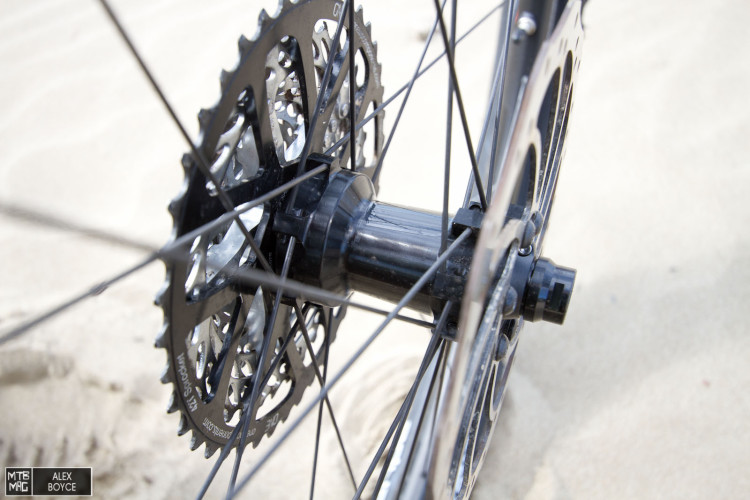
The rear hub is simple and clean, note the groove for adjustment via cone wrench.
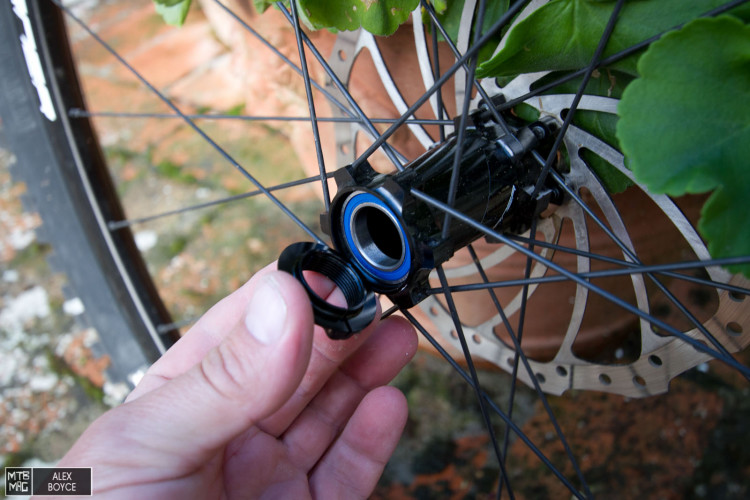
The hubs are easy to take apart – just unscrew the flange and pop off the drop-out spacer. The bearings underneath can easily be checked and cleaned. Snugging up the tension is a cinch when remounting.
The internals of the rim are well designed with a ribbed bead channel on each side to ensure tyres don’t shift under hard cornering forces. There is enough flange depth that keep the tyres secure so they can be inflated properly to a high pressure if using a tubeless set-up to seat the tyre (we have had tyres pop off of rims with too low of a flange), before being returned to an operating pressure.
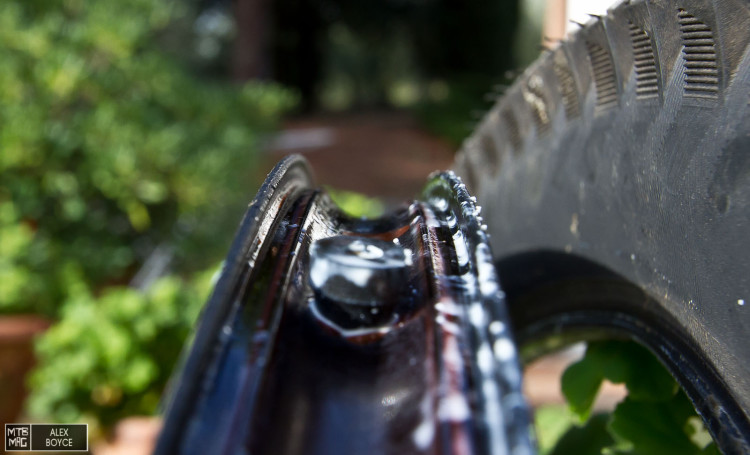
Here you can see the bead hook in the rim.
The tubeless valve design is precise and visually ergonomic where it meets the rim. Setting these wheels up tubeless with the supplied kit was easy and we found mounting tyres was possible without having to use tools to push the tyre over the rim, a feature we liked a lot. We did find that using a compressor or CO2 gas canister to seat tubeless tyres was necessary and that these aren’t possible to inflate from the start with a floor pump unless you’re using tubes.
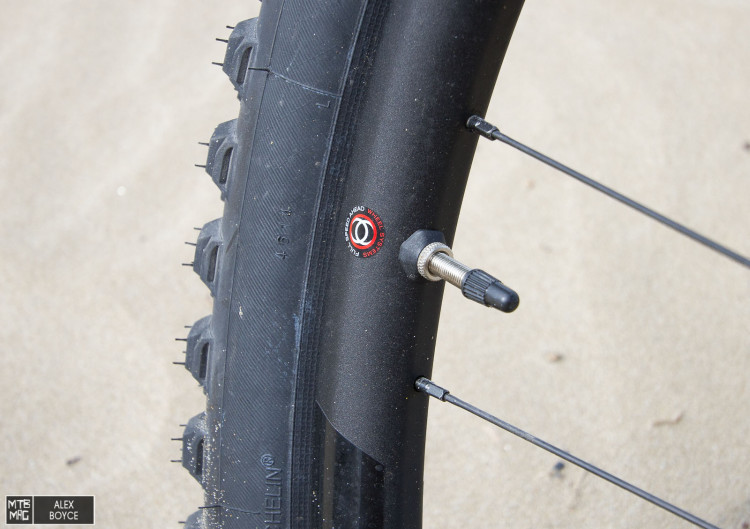
Attention to detail – a shaped valve settles into the rim.
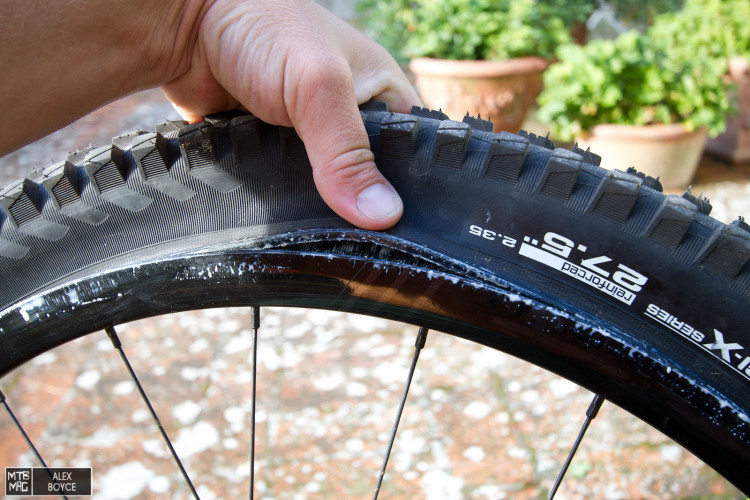
It is really easy to mount tyres, a feature we like a lot – no snapped tire levers here.
Handling
We found the Afterburner wheel set to be as expected – we took them over some fairly moderate trails and pedaled them long distances. The bearings rolled well and we felt extra lateral stiffness in cornering compared to our previous set of wheels. The Afterburners were lively and resilient, not up to carbon wheel performance in terms of trail feel and feedback, but closer than we have found with any other wheel sets that we’ve tried recently in this price range. It is really apparent the silence that surrounds these wheels as well. No pinging or spoke noises as you bounce down the trail. Just the smooth sound of the freewheel.
Engagement
We found the engagement speed of the hubs to be fast and accurate. During our test time we felt that the hubs performed as expected and we really liked the ability to adjust them easily. We once did a clean and check and reset the bearing drag very accurately by feel alone. It was easy to find the play/just tight position, then lock it into place with the allen bolt. A great design here. The freehub engagement remained consistent during the test period. We managed to experience a range of weather conditions. Despite some very wet weather the engagement was always dead on, thus indicating that everything was sealed well.
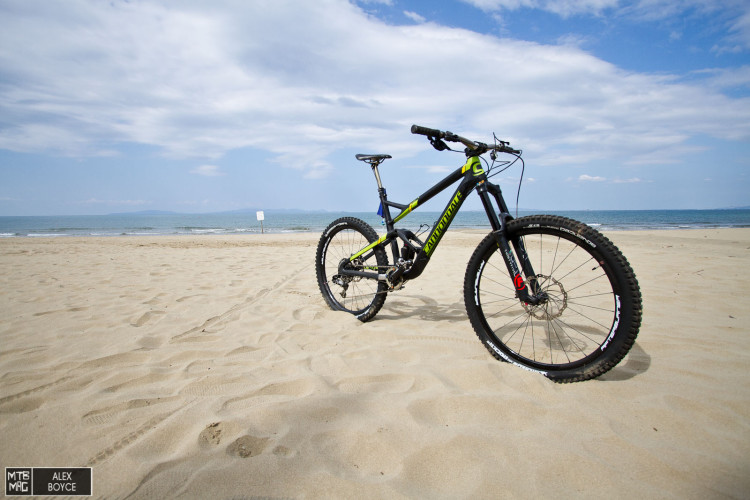
Everything cleaned up and performing as it should.
Strength & Durability
We gave the Afterburner wheel set a fairly robust test program and hit a lot of All Mountain and cross country trails. We did take them down a few aggressive Enduro trails as well just for good measure. The key thing we noted is how spoke tension remained constant over our time on the wheels. We did not have to worry about loose spokes. We didn’t experience any flat tyres, and only a few thumps that might leave their mark on the rim. After returning from our rides we were suitably impressed with the wheels continued performance and resistance to impacts on some trails that have been unkind to us over the years. We did not break any spokes and found that we could essentially take these wheels into an easy going Enduro environment quite happily without worrying about damaging anything. If you did break anything, it is worth noting the rear wheel does have an extra 2mm of spoke length on one side, so have a few spares that cover that if you need to replace any.
Overall
FSA have done a great job entering the market with their Afterburner wheel set and produced a well finished, solid and dependable product which responds well to use over time. We really liked the noise free experience with the 24 cross two, straight pull spoke design, which was chosen for lateral strength and low weight at this price range. The smooth, low rolling resistance we experienced from the easy to set friction collars was also great. The Afterburner set came with the option of all the axle standards for trail bikes, including quick release 135 or 142/12mm axle standards. We thought it was great they included the kit for converting to tubeless as well.
The overall value here is excellent and our wheels remained true despite our best attempts at pushing them past their limit we were always greeted with a product that kept going . We would caution against using them for Enduro racing, as FSA under their Gravity brand have specific wheels that meet the enhanced rigours of riding over very burlier terrain at speed, which we will also be testing later. We think that the Afterburner wheel set will serve many riders well. They’re light weight, stiff enough and really do well with the quality to price ratio.
www.fullspeedahead.com
Test Location: Punta Ala
[ad12]


